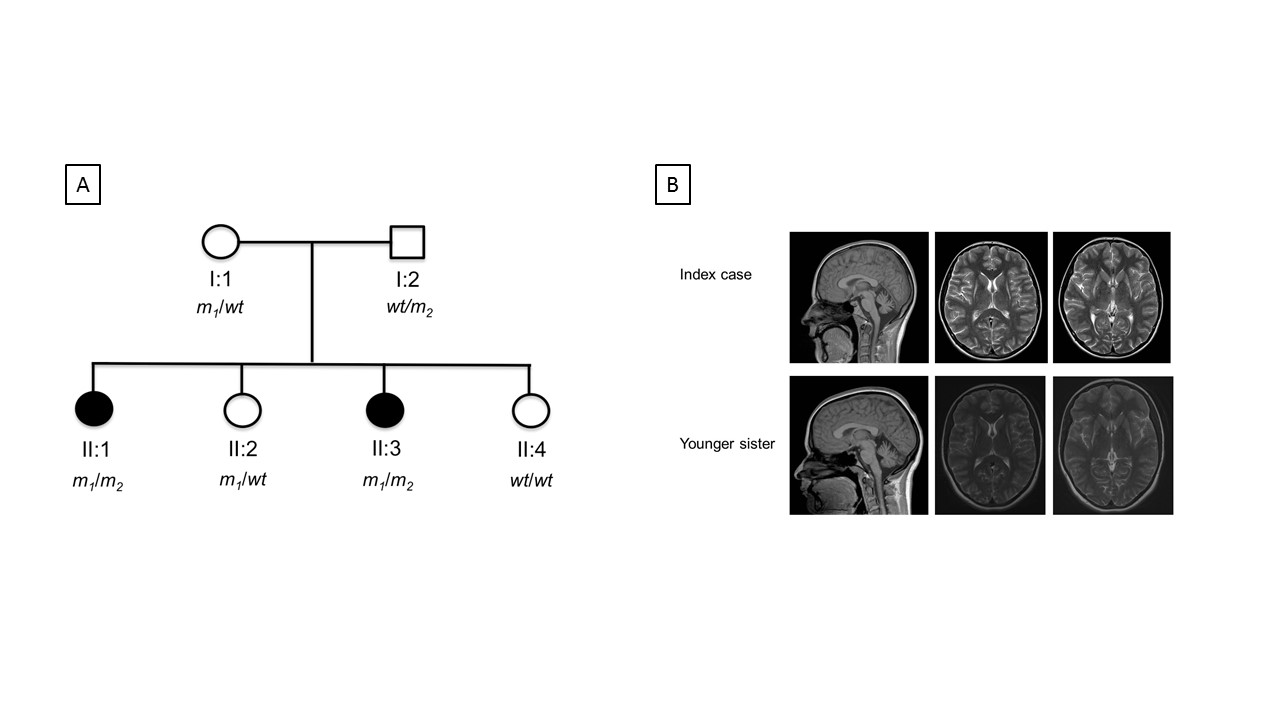Session Information
Date: Thursday, June 8, 2017
Session Title: Dystonia
Session Time: 1:15pm-2:45pm
Location: Exhibit Hall C
Objective: To elucidate the genetic cause of a distinct combined dystonia syndrome, inherited in an autosomal recessive fashion in a small UK kindred [Figure1A].
Background: With the increasing number of genetically defined dystonia syndromes, distinct clinico-radiological phenotypes are a welcome handle to guide the diagnostic work up.
Methods: Exome sequencing of both affected individuals and their mother was followed by variant filtration to look for rare or novel compound heterozygous or homozygous candidate mutations. Information from homozygosity mapping and linkage analysis was used in a supportive role. Other genetic causes known to be associated with the clinical or radiological phenotype were excluded by use of exome data or Sanger sequencing.
Results: Using whole exome sequencing, linkage analysis and homozygosity mapping, we identified compound heterozygous mutations in the NUBPL gene as the cause of autosomal-recessive combined dystonia. The gene lay in a region of positive linkage and segregated with disease in the family. The phenotype is characterized by early-onset generalized dystonia, cerebellar ataxia and pyramidal signs, which gradually progressed and led to loss of independent ambulation in adolescence, whereas cognition remained preserved. The brain MRI featured bilateral striatal necrosis and cerebellar atrophy [Figure1B].
Conclusions: We identified NUBPL mutations as the cause of autosomal-recessive dystonia combined with cerebellar ataxia and pyramidal involvement, with bilateral striatal necrosis and cerebellar atrophy on MRI. The here reported cases expand the clinical and radiological spectrum of NUBPL mutations. Bilateral striatal necrosis and cerebellar atrophy might be a useful handle in the differential diagnosis of the long list of early-onset combined dystonias.
To cite this abstract in AMA style:
B. Balint, G. Charlesworth, M. Stamelou, L. Carr, N. Wood, K. Bhatia. NUBPL mutations cause combined dystonia with bilateral striatal necrosis and cerebellar atrophy [abstract]. Mov Disord. 2017; 32 (suppl 2). https://www.mdsabstracts.org/abstract/nubpl-mutations-cause-combined-dystonia-with-bilateral-striatal-necrosis-and-cerebellar-atrophy/. Accessed April 20, 2025.« Back to 2017 International Congress
MDS Abstracts - https://www.mdsabstracts.org/abstract/nubpl-mutations-cause-combined-dystonia-with-bilateral-striatal-necrosis-and-cerebellar-atrophy/

